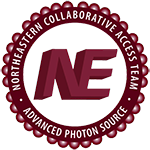Why Sulfur is Important in Lincosamide Antibiotics.
Publication Type:
Journal ArticleSource:
Chem, Volume 11, Issue 7 (2025)Abstract:
<p>We recently reported the conception and synthesis of cresomycin (), a fully synthetic lincosamide antibiotic effective in vitro and in vivo against multidrug-resistant Gram-positive and Gram-negative bacteria. In this work, we describe the chemical synthesis and characterization of sulfur atom replacement analogs (S → CH), (S → O), and (S → Se). Comparison of high-resolution co-crystal structures showed that the four analogs adopted identical conformations when bound to the bacterial ribosome, but due to variations of ≤1 Å in the bond lengths between the anomeric carbon and the varied atoms, only the and heteroatoms of and , respectively, were positioned to interact with the π-face of nucleobase G2505. and did not benefit from such stabilizations, with correspondingly negative consequences in both target engagement and antibacterial activities. We therefore conclude that the sulfur atom of the lincosamides is important in ribosomal binding.</p>
